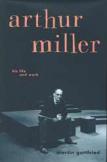Miller Time
Arthur Miller is one of America’s great writers. His plays Death of a Salesman and The Crucible reshaped the parameters of theater and thought. Arthur Miller is also one of America’s great citizens, with a political history that includes testimony before the House Un-American Activities Committee and a personal history that includes marriage to Marilyn Monroe. The drama critic Martin Gottfried’s biography of Miller, Arthur Miller: His Life and Work, covers with varying degrees of success all three aspectswork, political and personal historyof the man generally considered America’s greatest living playwright.
The first thing we learn about the now 88-year-old Miller is that he did not fully cooperate with this biography. Gottfried weighs the advantages of authorized versus unauthorized biography in his introduction, in which he reveals that Miller refused to cooperate when he realized that it would deal with not only his work but his life.
With or without Miller, Gottfried sets a lofty goal for himself: to bring balance and proportion into the search for the supposed’ influence of the life upon the work, while still searching for the influence of the workand the careerupon the life. Gottfried hits his target more times than not, no mean feat with a subject as sly, secretive and even belligerent about certain aspects of his life and work as is Miller.
The life of the playwright, who was born in 1915 to an affluent family of garment manufacturers, is most conveniently if simplistically divided into two acts: B.M. and P.M. Before Marilyn (Monroe), Arthur Miller’s early childhood was spent high above Central Park in a Manhattan penthouse. The Depression brought an end to that. A fine athlete but a poor studenthis brother Kermit was the better studentMiller worked a series of factory jobs after high school and was eventually accepted into the University of Michigan. Here he discovered playwrighting, possibly had contact with the Communist Party and met the woman, Mary Slattery, who in 1940 became his first wife. The lapsed Catholic Slattery and the passive Jew Miller had two children and remained married for the next 16 years, during which he became one of the period’s most respected playwrights. His plays about solid moral tone, guilt and systemic failure were revered by a post-World War II America well prepared for such ponderings on tragedy and the common man.
As success and fame widened Miller’s circles, he began an unlikely affair with Marilyn Monroe. Even though the marriage between Sex and The Intellect, as newspapers of the day heralded it, lasted a mere four-and-a-half years (following a six-year affair) and Miller wrote little during that time, Gottfried’s biography, and indeed nearly any future Miller biography that brings in his personal life, seems almost doomed to rubberneck at the spectacle. Miller’s equally complex relationship with the director Elia Kazan, who famously named names before H.U.A.C., as well as Miller’s own H.U.A.C. testimony and his behavior during the Red Scare are explored with equal care and precision.
Indeed, while Gottfried quibbles with some previously published facts in his and Kazan’s autobiographies, this biography’s bombshell is found in one brief paragraph in a chapter about life with his third wife, Ingeborg Morath, to whom he was married for 40 years and with whom he had two children. Here Gottfried reveals that Miller has a Down Syndrome child, and the pain it causes him is such that none of his official or professional chronologies include the birth, and Daniel does not exist in his father’s autobiography.
Post Marilyn, Miller’s stature took a long slide in the United States as it rose worldwide. Only within the last 10 years has he again been firmly re-ensconced at home. While the biography does a good job of evaluating the works written and produced during this period, like The American Clock, The Price and The Ride Down Mount Morgan, several events during this long second act of his life, like his participation as a delegate at the tumultuous 1968 Democratic National Convention in Chicago and his direction of Death of a Salesman in China in 1983, are not given the space they merit.
Gottfried, who has written biographies of theater luminaries, including Jed Harris, Bob Fosse and Angela Lansbury, offers a strong, if at times overly long literary analysis of Miller’s workfrom his earliest plays written while in college to his most recent, along with his novel, short stories and essays. While some of his academic interpretations will be of limited appealand frequently make this biography slog along like a dissertationthe author’s accounts of the dramas backstage more than compensate.
The author carefully dissects the tangles of Miller’s own life story with the lives of characters and themes in his work. Of Miller and his relation to After the Fall, his play commonly understood to be about Monroe, Gottfried calls him a playwright who evidently had the ego to beat his breast atbut not actually ather graveside. Throughout the book Gottfried also thoughtfully considers the Jewishness of Miller’s plays, characters, themes and subject matter. He even offers occasional psychoanalysis of Miller, noting, for example, that in place of directly experiencing emotions he conceptualized them.
The biography of a living figure is a tricky thing, with or without the subject’s cooperation. Gottfried provides as full a literary analysis and as honest a personal, political and professional life history as can be made of Arthur Miller at this time.
This article also appeared in print, under the headline “Miller Time,” in the December 8, 2003, issue.








